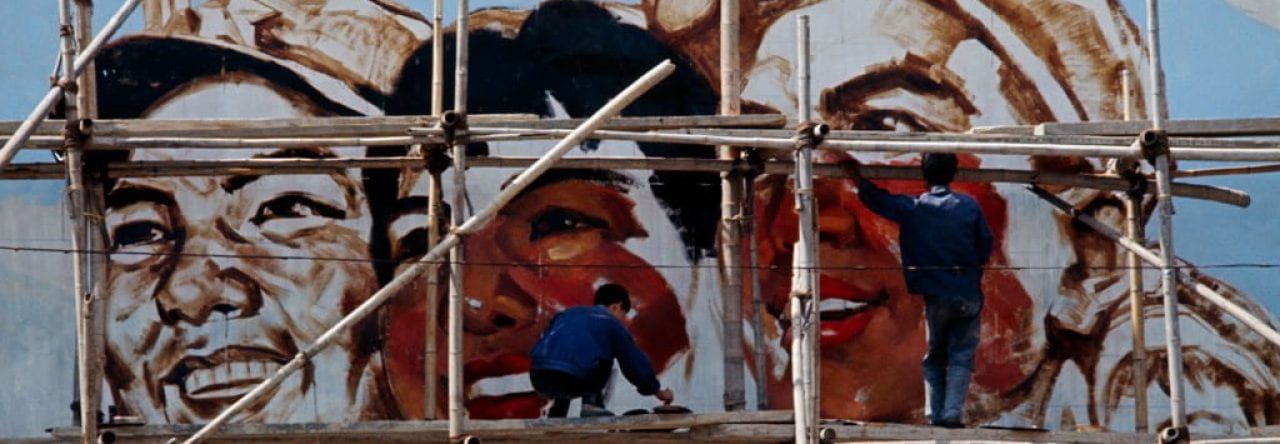

The Last Banquet by Zhang Hongtu is a perfect example of what Zhang aims to do with his art by placing Mao Zedong into ironic and almost laughable situations. This painting depicts Mao Zedong as every character in a copy of the painting The Last Supper by Leonardo Da Vinci. In the Da Vinci original, Jesus sits with his disciples at a long banquet table. Jesus has his arms out and open towards the viewer. He faces directly outwards while his disciples gather in two groups around him and talk and look at each other. Behind the table are three windows that show the world outside, Jesus is centered in the middle window.
In Zhang Hongtu’s copy, he masterfully changes specific aspects of the painting to make a completely new narrative and also morph the European image into a Chinese one. Firstly, Mao plays the part of both Jesus and his disciples. All of the Maos wear the same shirt but in different colors, a classic workman’s shirt with a red collar. And like Jesus in the Da Vinci, the center Mao sits with his hands outstretched and looking directly towards the audience. He also sits in the center window of three paneled windows, but instead of a view of a blue sky, we see traditional Chinese paintings. On the table, they eat bowls of rice with chopsticks, instead of bread and wine.
In an interview with Zhang Hongtu at Michigan University, Zhang said he first saw The Last Supper when he was 14 years old, and he liked the storyline. He remembers the story as Jesus saying: “one of you will betray me.” So, in this painting, Zhang says that Mao asks “who will betray me?” Zhang continues to describe the irony of the painting as the fact that Mao Zedong never criticized himself but always criticizes other people. (A Conversation)
I personally love this painting because it really shows Zhang Hongtu’s sense of humor and his attention to detail. He has fun with his art while also criticizing important social and political topics. My favorite part of his paintings are the traditional Chinese paintings in the windows.
Bibliography:
(1) Zhang Hongtu, In Between East and West Zhang Hongtu in Conversation with Martin Powers


Jun
Nice comparison between the two paintings! I think by comparing the derived painting to its original, you could easily spot the differences in styles, the tools used, or composition. From these differences, I think it was really helpful for you to capture the reason why Zhang Hongtu has produced this painting. I’m inspired by the comparison, and it sure will be on my future blogposts!